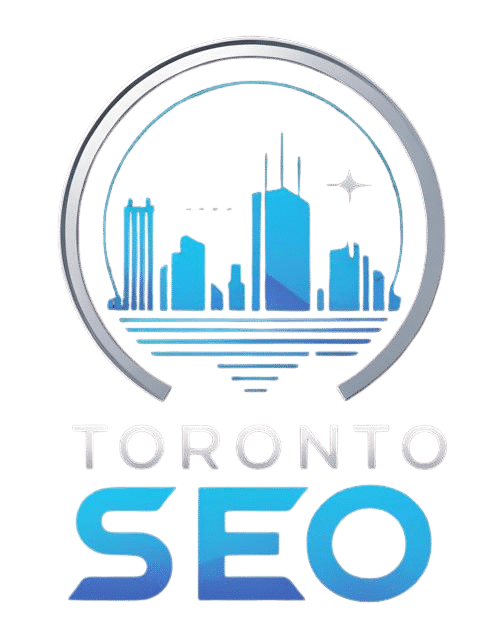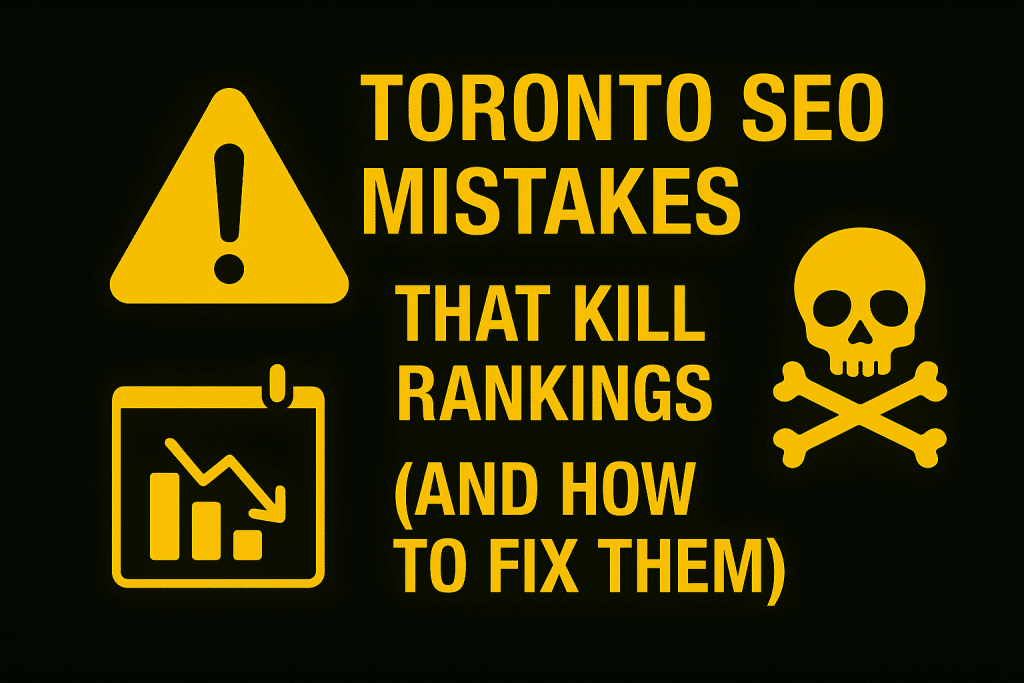Search visibility in Toronto’s hyper-competitive market is won or lost in the details. Many businesses unknowingly sabotage their own SEO strategies by making errors that seem minor at first glance—but end up devastating their organic rankings. Whether you’re a local service provider, a law firm, an eCommerce store, or a startup competing in one of Toronto’s most competitive SEO niches, understanding and fixing these mistakes can mean the difference between dominating the search results and being invisible.
This comprehensive guide outlines the most damaging Toronto SEO mistakes and provides actionable fixes that will help you climb back to the top of Google.
1. Ignoring Local SEO Signals
Local SEO is the lifeblood of Toronto businesses targeting city-specific searches. Yet many companies overlook the basics.
Unoptimized Google Business Profile (GBP)
A poorly optimized Google Business Profile is one of the biggest missed opportunities. Incomplete business details, inconsistent NAP (Name, Address, Phone Number) citations, or outdated images can crush your visibility in Google’s Local Pack.
Fix:
Complete every GBP field with accurate data.
Add high-quality photos of your office, staff, or storefront.
Use location-specific keywords naturally in your business description.
Keep NAP information consistent across directories.
Tip: Google prioritizes businesses with regular updates, Q&A responses, and fresh images. Treat GBP like a social media profile—active and optimized.
Lack of Local Citations
Citation building is still a strong ranking factor for local searches. Failing to list your business on reputable local directories or having inconsistent information can confuse Google and potential customers.
Fix:
Audit and clean up listings across directories like Yelp, YellowPages, and Bing Places. For a deeper strategy, read why citation building still matters for Toronto local rankings in 2025.
2. Neglecting Technical SEO
Many businesses invest heavily in content and backlinks but ignore the technical foundation their website sits on. This is a critical mistake.

Slow Page Speeds
In 2025, Core Web Vitals are a dominant ranking factor. Sites that load slowly or shift content mid-load (CLS issues) lose both rankings and user trust.
Fix:
Use tools like PageSpeed Insights to identify bottlenecks.
Compress large images, enable lazy loading, and reduce unused JavaScript.
Implement caching and use a CDN for global speed improvements.
For a deeper dive, see Core Web Vitals Toronto for city-specific optimization strategies.
Poor Mobile Optimization
Toronto users are mobile-first. A site that isn’t responsive or has broken mobile layouts will experience higher bounce rates, hurting rankings.
Fix:
Ensure your site is fully responsive.
Test with Google’s Mobile-Friendly Test.
Avoid intrusive interstitials and oversized elements on mobile.
Broken Internal Links & Redirect Chains
Old URLs, site migrations, or careless updates often lead to broken internal links or long redirect chains. These not only frustrate users but also waste crawl budget.
Fix:
Regularly audit your site with tools like Screaming Frog or Ahrefs. Fix or update broken links, and use direct 301 redirects without unnecessary hops. See SEO migration guide Toronto for best practices.
3. Producing Thin or Unstructured Content
Lack of Depth
Toronto businesses sometimes publish blog posts or service pages that are less than 300 words with vague information. Google prefers rich, well-structured content that answers search intent thoroughly.
Fix:
Invest in long-form, structured content with clear headings, subheadings, and internal links. For example, if you’re a local service business, check out SEO in Toronto for service businesses for strategies to make content more robust.
No Topical Clustering or Siloing
Publishing random articles without interlinking or thematic structure confuses search engines. A lack of silos leads to diluted authority.
Fix:
Create content clusters around core topics (e.g., Local SEO, Technical SEO, Content Optimization). Internally link between pillar pages and supporting blogs to signal topical depth. See content silos Toronto for a blueprint.
4. Overlooking User Intent in Keyword Targeting
Toronto has a diverse audience with varying search intents—local services, B2B solutions, startups, professionals, and eCommerce. Targeting the wrong keywords (e.g., informational when you need transactional) leads to traffic that doesn’t convert.
Not Matching Content Type with Keyword Intent
For example, targeting “Toronto SEO pricing 2025” with a generic blog post instead of a pricing landing page is a common error.
Fix:
Research user intent behind each keyword (informational, navigational, transactional).
Align your content type accordingly—blogs for informational, service pages for transactional, etc.
Use tools like Google’s “People Also Ask” or competitor analysis to refine your targeting.
See Toronto SEO pricing 2025 for an example of intent-optimized content.
5. Failing to Track and Analyze SEO Performance
Without proper measurement, SEO becomes guesswork. Many businesses set up campaigns and never track progress—or worse, rely only on vanity metrics.
No Analytics or Conversion Tracking
A surprising number of Toronto companies still don’t have Google Analytics 4 or Search Console properly configured. This leads to missed insights about what’s actually driving traffic and conversions.
Fix:
Set up GA4 with conversion goals.
Integrate Search Console to monitor indexing, CTR, and keyword positions.
Use UTM tags to track SEO campaign performance.
For step-by-step implementation, check How to Track SEO Performance with Analytics.
6. Not Adapting to Algorithm Updates
Toronto is often among the first cities to feel the impact of global Google algorithm updates, given its high business density. Failing to adjust strategies can lead to sudden ranking drops.
Fix:
Stay informed on Google’s latest algorithm updates and adjust content, technical SEO, and link-building accordingly. Use Google’s official Search Status Dashboard for real-time core update alerts.
7. Treating SEO and Branding as Separate Efforts
Modern SEO in Toronto isn’t just about keywords—it’s about building authority and trust. Ignoring personal or corporate branding limits long-term ranking potential.
Fix:
Invest in brand signals like author bios, company mentions, and social media activity. Read why building a personal brand in search is the next big move for Toronto founders to align branding with SEO.
8. Relying on One Strategy Only
Many businesses rely solely on either content marketing, link building, or technical SEO, without integrating all three. This one-dimensional approach caps growth potential.
Fix:
Balance your SEO strategy with technical excellence, high-quality content, and strategic outreach. See content marketing vs technical SEO to understand how successful Toronto sites combine both for maximum visibility.
9. Not Leveraging AI and Automation Tools
Top agencies in Toronto are using AI to optimize content, cluster keywords, and automate reporting. Businesses that ignore these tools fall behind.
Fix:
Integrate AI-driven strategies such as prompt engineering, keyword clustering, and predictive analytics. Read how top SEO agencies in Toronto are using AI to outrank the competition to modernize your strategy.
10. Delaying Professional Help
DIY SEO may work at the beginning, but Toronto’s SERPs are dominated by experienced professionals who know the nuances of local search. Many businesses wait too long to hire experts, costing them valuable traffic and leads.
Fix:
Evaluate whether to hire an expert or keep SEO in-house. This guide on hiring a Toronto SEO expert vs doing it in-house outlines the pros and cons clearly.
Conclusion: Clean Up Mistakes, Reclaim Rankings
Toronto’s digital landscape rewards precision, adaptability, and strategic execution. Fixing these common SEO mistakes is not just about recovering rankings—it’s about building a sustainable, scalable presence in one of Canada’s most competitive markets.
If your site has plateaued or declined, take this as your action plan. Start by auditing technical SEO, improving content depth, aligning with local signals, and adapting to algorithm changes. For expert help tailored to your business, contact us today.


